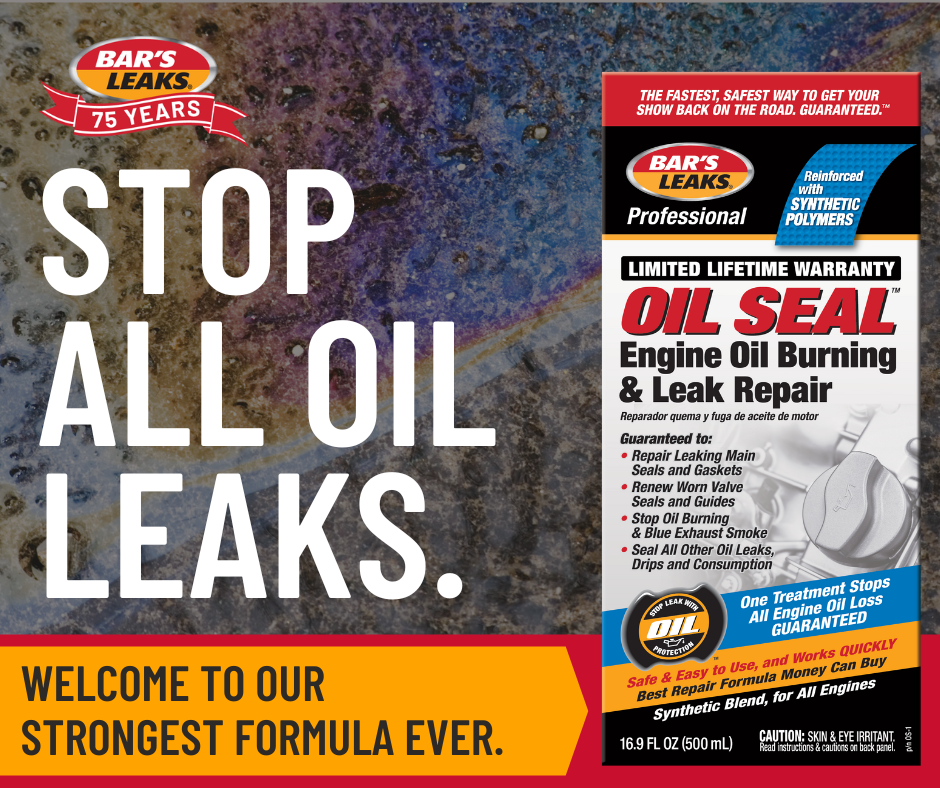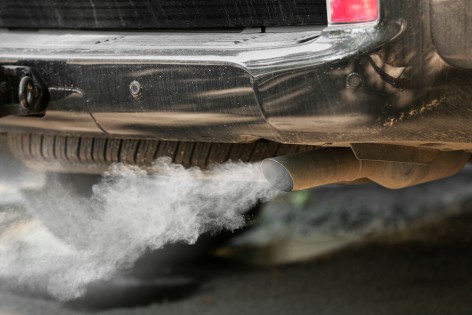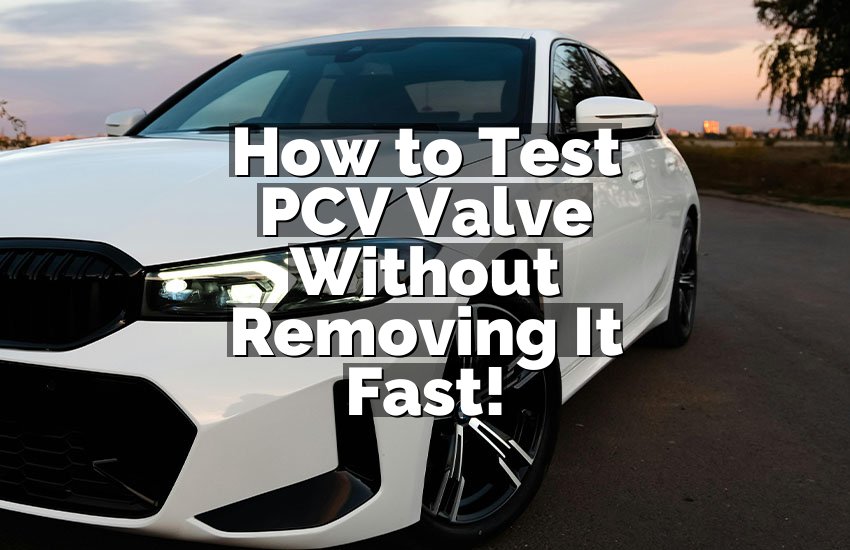If your car is losing oil but there’s no leak or smoke, possible causes could include a faulty oil filter, worn piston rings, or a damaged PCV valve. To fix the issue, you should inspect and replace the oil filter, perform a compression test to check for worn piston rings, and inspect and replace the PCV valve if necessary.
Regular maintenance and inspections are essential to keep your car running smoothly and prevent potential engine problems.

Credit: barsleaks.com
Possible Causes Of Oil Loss
Possible causes of oil loss in a car without any visible leak or smoke can include worn piston rings, faulty gaskets, valve stem seals, or a PCV system issue. To fix the problem, it is recommended to consult a mechanic for a thorough inspection and proper diagnosis.
Faulty Piston Rings
If your car is losing oil but there’s no visible leak or smoke, one possible cause could be faulty piston rings. These rings are responsible for creating a seal between the piston and cylinder wall to prevent oil from leaking into the combustion chamber. When the rings are worn or damaged, oil can bypass them and get burned during the combustion process, leading to oil loss.
Worn Valve Seals
Another potential cause of oil loss without any leak or smoke is worn valve seals. Valve seals are located on the top of the cylinder head and prevent oil from seeping into the combustion chamber through the intake and exhaust valves. Over time, these seals can wear out or become damaged, allowing oil to escape and be burned off during the combustion process. This can result in decreased oil levels in your car.
Clogged Pcv Valve
A clogged Positive Crankcase Ventilation (PCV) valve is yet another possible cause of oil loss in your car. The PCV valve is responsible for regulating the airflow from the crankcase to the intake manifold. If the valve becomes clogged or fails to function properly, pressure can build up in the crankcase, causing oil to be pushed out of the engine and leading to oil loss. Regular maintenance and cleaning of the PCV valve can help prevent issues with oil loss.
Signs And Symptoms
When your car is losing oil with no visible leaks or smoke, it can be a mysterious and frustrating issue to troubleshoot. Understanding the signs and symptoms can help you identify the problem early and prevent potential damage to your vehicle. Below are the key signs and symptoms to look out for when dealing with oil consumption and low oil levels, as well as engine misfire.
Oil Consumption
If you find yourself constantly topping up your oil between regular oil changes, it could be a sign of excessive oil consumption. Pay attention to the frequency of oil refills and monitor any noticeable decrease in the oil level over a short period of time.
Low Oil Level
Checking the oil level on a regular basis is crucial to detecting if your car is losing oil. A consistently low oil level on the dipstick may indicate a significant oil loss, which should be addressed promptly to prevent potential damage to the engine.
Engine Misfire
An engine misfire can be a symptom of oil loss without any visible external signs. If you notice a rough or uneven engine performance, it could be linked to oil consumption issues. Addressing this promptly is essential to prevent further damage to the engine.
Diagnosing The Issue
Diagnosing the issue of a car losing oil without any visible leak or smoke can be challenging. Potential causes could include a faulty PCV valve, worn piston rings, or a clogged oil passage. It’s important to carefully inspect the engine and seek professional help to address the problem effectively.
If you’ve noticed that your car is losing oil but there’s no visible leak or smoke, it’s important to diagnose the issue as soon as possible. Low oil levels can lead to serious engine damage if left unchecked. In this section, we’ll go over three key steps to help you identify the cause of the oil loss and find a suitable fix. By following these troubleshooting methods, you’ll be able to determine the underlying problem and take the necessary steps to resolve it.
Check Engine Oil Level
The first step in diagnosing the issue is to check your car’s engine oil level. This simple task can provide valuable information about the oil consumption rate. Here’s how you can do it:
- Make sure your car is parked on a level surface and the engine is turned off
- Pop open the hood and locate the oil dipstick
- Remove the dipstick, wipe it clean, and then reinsert it fully
- Take out the dipstick again and check the oil level. It should be within the recommended range marked on the dipstick
If the oil level is significantly lower than it should be, this could indicate excessive oil consumption. However, keep in mind that a small decrease in oil level over time is considered normal.
Inspect Pcv System
The next step is to inspect the Positive Crankcase Ventilation (PCV) system. This system plays a crucial role in regulating internal engine pressure and preventing oil from escaping. Here’s how you can check it:
- Locate the PCV valve. It is usually connected to the engine’s valve cover or intake manifold
- Inspect the valve and associated hoses for any signs of leakage, blockage, or damage
- If you notice any issues, replace the faulty components
A malfunctioning PCV system can cause excess oil to be burned off or expelled, leading to oil loss without any visible signs of leakage.
Perform Compression Test
Lastly, performing a compression test can help identify any internal engine issues that may be causing oil loss. Here’s how you can carry out this test:
- Start by ensuring your engine is warm
- Disconnect the ignition coil or fuel injector from each cylinder to disable the spark or fuel delivery
- Remove all the spark plugs
- Insert a compression gauge into each spark plug hole and crank the engine multiple times
- Record the compression readings for each cylinder and compare them to the specifications provided by the manufacturer
If you notice a significant variation in the compression readings between cylinders, this could indicate internal engine problems that could be contributing to oil loss. Consulting a professional mechanic may be necessary in such cases.
Fixing The Issue
If your car is losing oil but there’s no leak or smoke, there are a few potential causes and fixes to consider. Identifying the issue promptly and taking appropriate action can help prevent further damage to your vehicle. Here are three common fixes for this problem:
Replacing Faulty Piston Rings
If your car’s piston rings are worn or damaged, they may not be sealing the combustion chamber properly, leading to oil consumption. Replacing faulty piston rings can help resolve this issue. This process involves:
- Removing the engine’s cylinder head and piston assembly
- Inspecting the rings for signs of wear, cracks, or damage
- Replacing the faulty rings with new ones
- Reassembling the cylinder head and piston assembly
- Performing a thorough test to ensure proper functioning
By replacing faulty piston rings, you can improve the sealing of the combustion chamber and help reduce oil consumption in your car.
Replacing Worn Valve Seals
Worn valve seals are another potential culprit for oil loss in a car. These seals prevent oil from entering the combustion chamber. When they wear out, oil can seep through and burn off, causing oil consumption. Replacing the worn valve seals can address this issue. The process involves:
- Removing the cylinder head
- Inspecting the valve seals for signs of wear or damage
- Removing the worn seals
- Installing new valve seals
- Reassembling the cylinder head
- Performing a thorough test to ensure proper functioning
By replacing worn valve seals, you can prevent oil from entering the combustion chamber and reduce oil consumption in your car.
Cleaning Or Replacing Pcv Valve
The Positive Crankcase Ventilation (PCV) valve plays a crucial role in maintaining proper engine function. If the PCV valve becomes clogged or fails, it can cause pressure build-up in the crankcase, leading to oil loss. Cleaning or replacing the PCV valve can help rectify this problem. The steps involved are:
- Locating the PCV valve in your car’s engine
- Inspecting the valve for signs of clogging or damage
- Cleaning the valve using an appropriate solvent or replacing it with a new one
- Ensuring proper installation of the cleaned or new PCV valve
- Verifying that the PCV system is functioning correctly by conducting a test
By addressing any issues with the PCV valve, you can regulate crankcase pressure and minimize oil loss in your car.
Preventive Measures
When it comes to preventing your car from losing oil without any apparent leak or smoke, adopting some preventive measures can help you maintain the proper functioning of your vehicle. Here are some practical steps that you can take to prevent oil loss in your car.
Regular Oil Changes
Regular oil changes are essential for the overall health of your car. Changing the oil at recommended intervals, as per the manufacturer’s guidelines, helps ensure that the engine remains well-lubricated and reduces the likelihood of oil loss due to excessive degradation.
Maintaining Proper Engine Temperatures
Maintaining proper engine temperatures is vital to prevent oil loss. Engine overheating can lead to increased oil evaporation and loss. Regular checks and maintenance of the cooling system and radiator can help in preventing excessive oil consumption.
Avoiding Overfilling Of Oil
Avoiding overfilling of oil is crucial to prevent oil loss in your car. Overfilling the oil reservoir can lead to increased pressure and can cause the oil to be forced out of the engine through various seals and gaskets. Adhering to the recommended oil level can prevent such issues.

Credit: www.sta-bil.com.au
Seeking Professional Help
Seeking professional help is crucial when experiencing a car losing oil without any visible leaks or smoke. Identifying the causes and implementing the appropriate fixes can efficiently resolve this issue.
Consulting a Mechanic
When you are faced with a situation where your car is losing oil but there is no visible leak or smoke, seeking professional help becomes crucial. Consulting a mechanic is the most appropriate course of action to identify and address the issue effectively. A qualified mechanic possesses the knowledge and experience required to diagnose the problem accurately, ensuring your vehicle’s optimal performance and safety. But before you head to the nearest auto shop, let’s take a look at what you can expect when consulting a mechanic.Getting a Professional Diagnosis
When you reach out to a mechanic regarding your car losing oil but no visible signs of a leak, you can expect the process of getting a professional diagnosis to involve several steps. First and foremost, the mechanic will listen attentively to your description of the issue and ask relevant questions to gather more information.Based on these details, the mechanic will then likely conduct a visual inspection under the hood, examining various components such as the engine, oil pan, gaskets, and seals. They may also perform an oil pressure test to determine if any abnormalities are present.
An element of the diagnostic process may also involve assessing the overall condition of your vehicle, including checking for any signs of oil contamination or other potential causes for concern. Additionally, the mechanic may utilize specialized tools and equipment to conduct a thorough evaluation of the car’s systems for any internal issues that may be contributing to the oil loss.
After gathering all the necessary information and completing the diagnosis, the mechanic will be able to provide you with a detailed report of their findings. This report will outline the root cause of the oil loss and recommend appropriate fixes or repairs.
| Benefits of Consulting a Mechanic |
|---|
| Accurate diagnosis and identification of the issue |
| Knowledgeable guidance and recommendations for resolving the problem |
| Access to specialized tools and equipment for a thorough evaluation |
| Assurance of professional expertise and workmanship |
- Resolve the issue promptly to prevent further damage
- Avoid potential safety hazards and breakdowns on the road
- Extend the lifespan of your vehicle through proper maintenance
- Enjoy peace of mind knowing that your car is in good hands
Credit: www.quora.com
Conclusion
Addressing oil loss in a car without visible leaks or smoke requires a thorough inspection. Problems may stem from worn piston rings, valve seals, or a faulty PCV system. Regular maintenance and using the right oil can prevent these issues.
Consulting a professional mechanic is essential for accurate diagnosis and effective solutions.


